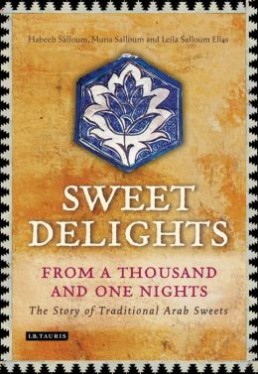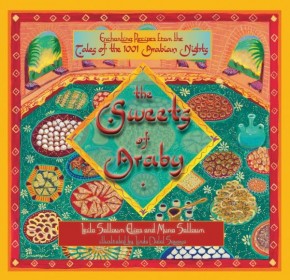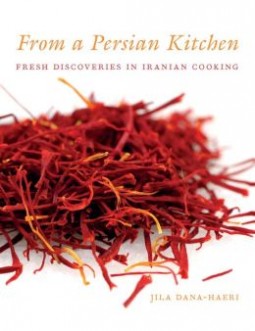Sweet Delights from a Thousand and One NightsThe Story of Traditional Arab Sweets
From delicious pastries, filled with pistachios and fragrant syrups, to luscious puddings, biscuits, and pies, it is the ideal addition to any kitchen. A unique insight into Middle Eastern culinary history, this book is a must-have for anyone with a sweet tooth.
Which dessert is named after the heroic third-century Queen Zenobia of Palmyra? Which luscious rice pudding shares its name with the eighth-century Abbasid Caliph al-Ma’mun? How does one make the perfect Baqlawah? Blending cookery with culture and recipes with history, this is the fascinating and delectable story of traditional Arab sweets. The authors here take us on a culinary journey across Iraq, Syria, Egypt and al-Andalus, presenting readers with clear and easy-to-recreate recipes from across the medieval Arab world. Filling the tables of caliphs and noblemen, these sumptuous desserts of saffron and rose water conjure the opulence and grandeur of the medieval Islamic world. Bringing together tenth- to fourteenth-century Arabic texts, the authors retrace the history of these sweet dishes, reviving the original recipes and following their development and influence over the centuries into non-Arabic speaking lands. Honey, dates, figs and pomegranates are just a few ingredients featured in this exquisite selection of mouth-watering desserts which have been modernised for cooks to try at home, all woven together with medieval poems and stories.
Baqlawa
Layered filo pastry with nut filling
Historical version
Al-lawzinaj bread
Take starch and dissolve into a thick solution and strain. For every uqiya add an egg white and beat vigorously and continuously. Then begin by heating the tray and wiping the top of it with a piece of cloth that has wax and walnut meats in it. Spoon out the batter and pour it on it and leave it to the heat [to let it dry]. When it is ready, remove it from it and wipe it [the tray] with the piece of cloth and make another one. Whoever wishes to make thicker Lawzinaj, then increase the thickness of the batter and make them look like a disc. Stick it on the tray as I have described it, God willing.
al-Warraq, p.37. Translated by Muna Salloum and Leila Salloum Elias. (See also
the translation by Nawal Nasrallah: al-Warraq, Annals of the Caliphs’ Kitchen,
pp.125–26.)
Historical version
Judhab Khubz al -Qata’if
Take Qata’if crepes in the amount needed. Sprinkle a little rose water in the pot and spread the crepes in the pot in layers, between every two layers almonds and sugar or finely pounded pistachios. Sprinkle rose water on it. When the crepes are done in the pot, pour a little fresh sesame oil over them and drown in syrup. Then suspend over it a fatty chicken coloured with saffron. When it is cooked, remove. It can be made with small stuffed Qata’if in this fashion.
al-Baghdadi, p.71. Translated by Muna Salloum and Leila Salloum Elias. (See also the translation by Charles Perry, A Baghdad Cookery Book, p.93.)
Modern recipe
Moderately difficult
Food historians specializing in the history of Arab cuisine are unable to determine how early Baqlawa appeared on dessert tables in the Arab world. However, there is ample evidence from Arabic medieval cookbooks of a very thin dough used as a wrap for certain pastries such as Lawzinaj. This is why we find a recipe from the tenth century for this type of dough in al-Warraq (37). Later in the thirteenth century in al-Andalus, al-Tujibi instructs how to prepare very thin paper-like sheets made from a pure and fine semolina flour and water to make the dough called Kunafa (see p.39) (69).
There is also an interesting recipe in the text of al-Baghdadi that could possibly be the precursor to Baqlawa. A filling of almonds or pistachios and sugar spread between every two layers of the Qata’if pastry bread could be the starting point of the famous Baqlawa of the Middle East. Of course, if al-Baghdadi’s Judhab Khubz al-Qata’if plays this historical role in the cuisine of Middle Eastern desserts, the dripping from the fatty saffron-coloured chicken hanging above the Judhab as they cook together has, of course, been eliminated in the modern cooking process.
Though Baqlawa, in name, is not part of the recipe collection of medieval Arab sweets found to date, in a thousand years from now this delicious modern pastry, in its present form, will be spoken of as historically significant. For this reason we have decided to include Baqlawa here, offering it as a possible descendant of the two source recipes.
Makes about 35 pieces
Preparation time: 45 minutes
Cooking time: 45 minutes
Ingredients
Basic qatr recipe using orange blossom water (see ‘Basic recipes’ section)
2 cups (300g) whole walnuts or almonds or pistachios, coarsely chopped
1 cup (200g) granulated sugar
2 cups (390g) clarified butter, melted
1 teaspoon cinnamon
1 tablespoon orange blossom water
1 pound (454g) filo pastry, thawed according to package directions
Method
To make the filling, combine the walnuts or almonds or pistachios, sugar, quarter of a cup (49g) of the butter, the cinnamon and the orange blossom water, then set aside.
Brush the bottom and sides of a 9 by 13 by 2 inch (23 by 33 by 5cm) baking pan with two tablespoons of the butter, then set aside.
Remove the filo pastry from the package, unfold and spread out on a towel. Cover the unused filo with a lightly dampened towel or plastic wrap/cling film to prevent it from drying out as you work. Take one sheet and place it in the baking pan, then brush with the butter. Keep repeating the procedure until half of the filo sheets are used. Spread the nut mixture evenly over the buttered layers.
Take one sheet of the filo and place over the nut mixture, brush with butter, then continue this procedure until the remainder of the filo sheets are used.
Preheat the oven to 400°F (200°C).
Heat the remaining butter, then brush evenly over the top of the Baqlawa. With a sharp knife, carefully cut into approximately 2 inch (5cm) squares or diamond shapes. Bake for five minutes, then lower the heat to 300°F (150°C) and bake for 35–40 minutes, or until the sides turn light brown.
After the sides of the Baqlawa turn light brown, place the pan under the broiler/grill, then turn the tray around until the top of the Baqlawa turns evenly golden. Remove from the oven, then spoon the qatr over each square or diamond. Allow to cool before serving. Baqlawa can be served directly from the pan or by assembling the pieces in layers on a serving platter. (If a drier and less sweet version of Baqlawa is desired, prepare only half the qatr recipe.)







Leave a Reply